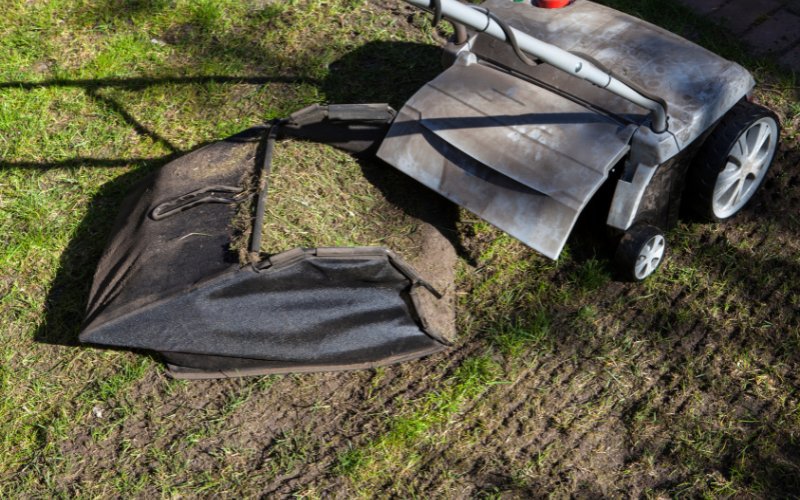If you are new to aeration, then you might not be aware that there are a few steps you should tackle before you grab your aerator. These steps will not only make life easier but will also result in better aeration.
Additionally, you will be able to avoid a few costly mistakes. So, let’s take a look at what to do before aerating your lawn.

What Should You Do Before Aerating Your Lawn? (The Short Answer)
There are several steps you will want to take before aerating your lawn. These steps will make aerating much easier and will give better results.
Here are five steps for lawn aeration preparation.
- Mow Your Lawn First
- Dethatch Your Lawn
- Water Your Lawn the Day Before
- Mark Out the Underground Obstacles
- Decide What Type of Aerator to Use
Lawn Aeration Preparation (Step-By-Step Guide)
I’m going to cover the things I recommend you do before grabbling your aerator and in the process, I’ll probably answer some questions you might have. Many of the points covered below relate to common questions people have about pre-aeration prep.
Should I Mow Before Aerating?
So, should I mow before aerating? Well, you don’t have to, but it will make life much easier.
If your lawn is long, you will find it much harder to push your aerator if you intend to use a walk-behind design.
Also, the extra few inches of grass will reduce how much your aerator will cut into the ground. If you are only using a shallow aerator, this extra thickness on your lawn could drastically reduce how deep you cut.
How short to cut grass before aerating? My best advice is to mow your lawn down to the usual height to give the aerator the best opportunity to cut to its maximum potential.
It’s only grass types that need to be scalped when mowing that should be mowed lower than usual.
But if you choose not to mow before aerating, then this isn’t going to cause any harm to your lawn. It’s just not going to do as good of a job.
Should I Dethatch Before Aerating?
Well, again, this is similar to mowing before you aerate. You don’t have to, but it certainly makes work a lot easier.
The added material of thatch can create problems for your aerator, especially if you use a rotary lawn aerator.
This is because as the mechanism turns, the spikes tear out the thatch and leave a real mess behind.
Plus, this can make using the aerator harder as you have more material to push through. Similar to mowing, the extra material will lift your aerator higher off the ground, which will, in turn, make the hole shallower.
This is not a problem if you are using a deep aerator, but for a shallow aerator, the reduction in depth might be more than you would like.
Water Your Lawn the Day Before
One step that you definitely want to do is give your lawn a good watering the day before.
This is so that the water can soften up the ground, allowing the cores, or spikes, to penetrate more easily.
I have tried to aerate before without watering, and it was nearly impossible. My rotary aerator would just scratch over the surface and do nothing at all.
So, definitely water your lawn first.
Mark Out the Underground Obstacles
I wish someone had told me what to do before aerating my lawn the first time. One hard lesson I learned was to mark out any underground obstructions I wanted to avoid.
What obstacles, you ask? Well, irrigation heads and the cable for my internet. It turns out that the spikes of an aerator can dig pretty deep and tear up anything in its path.
So, taking time to go around your lawn to find anything that might get in the way is time well spent.
Once you find something, mark it with a landscape flag so you know where it is when you begin aerating. A pack of flags that cost just a few dollars can save you from a world of problems.
Decide What Type of Aerator to Use
Aerators come in all shapes and sizes, ranging from small manual push versions to much wider and deeper powered models.
Typically an aerator will penetrate 2-6 inches into the ground, depending on the model and how you have the machine set up.
Also, there are spike aerators that simply make a hole, and then there are core aerators that cut a core of soil and then discharge it on the lawn or in a hopper on the machine.
I’d suggest you select an aerator that suits the size of your lawn, plus a machine that will aerate to your needs. If you need more effective aeration, I recommend a core aerator, as this type of machine makes a much larger hole.


Leave a Reply